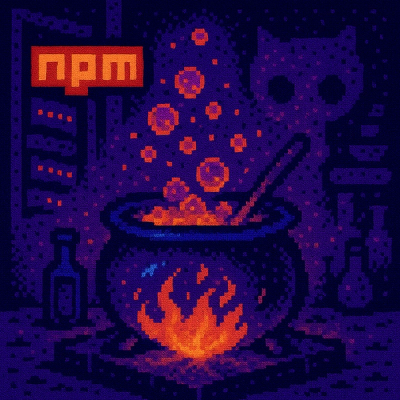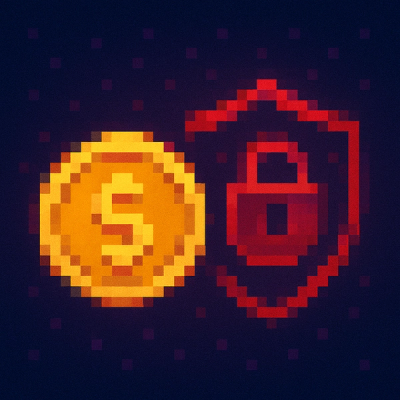
Security News
The Changelog Podcast: Practical Steps to Stay Safe on npm
Learn the essential steps every developer should take to stay secure on npm and reduce exposure to supply chain attacks.
@chec/integration-configuration-sdk
Advanced tools
This SDK is available to help build custom configuration apps for integrations that work with Commerce.js infrastructure and appear within the Chec Dashboard.
This SDK is available to help build custom configuration apps for integrations that work with Commerce.js infrastructure and appear within the Chec Dashboard.
yarn add @chec/integration-configuration-sdk
There are two options for controlling the configuration of an integration. You can either choose to create a completely custom web app that will appear within the Chec Dashboard (the "frame" option), or you can dynamically update the form schema of the integration template, and react to input and events triggered by the user (the "controlled" option).
As your app will be brought in and shown during a user session in the Chec Dashboard, the app will need to establish a connection to the dashboard:
import { createSDK, ConfigSDK } from '@chec/integration-configuration-sdk';
createSDK().then((sdk: ConfigSDK) => {
// Typescript is shown, but you can remove the references to `ConfigSDK` to convert to native JS
})
Next, you will need to decide how you will influence the configuration screen by choosing one of the options detailed above.
This option does not require your app to product any user interface. Instead, you can use the SDK to update the form schema that the Chec Dashboard uses to display a form:
import { createSDK, ConfigSDK } from '@chec/integration-configuration-sdk';
(async () => {
const sdk = await createSDK();
sdk.setSchema([
{
key: 'name',
type: 'short_text',
label: 'Your name',
},
]);
})();
When the configuration screen renders in the Chec Dashboard, a form will display that matches the schema set by your app. As the user fills in the form, the integration config is updated as usual.
You can register an event handler that is called when the configuration changes:
(async () => {
const sdk = await createSDK();
sdk.onConfigUpdate((config: object) => {
console.log(config);
});
})();
You can render buttons and watch for clicks:
import { createSDK, ConfigSDK } from '@chec/integration-configuration-sdk';
(async () => {
const sdk = await createSDK();
sdk.setSchema([
{
key: 'my_button',
type: 'button',
label: 'Click me',
},
]);
sdk.on('click', 'my_button', () => {
console.log('Clicked!');
});
})();
You can also set config attributes directly using setConfig. Configuration set this way is merged with existing
configuration.
(async () => {
const sdk = await createSDK();
sdk.setConfig({
my_custom_option: 'Hello world!',
});
})();
You can build a custom UI to configure your app, and set the resulting configuration using the sdk.setConfig API
detailed above. The Chec dashboard will render your app in the configuration panel, even when using the "controlled"
option, but your app is hidden until the dashboard knows the height of the content that your app renders. You can
report the height of your app using the SDK, or turn on the automatic height detection system:
(async () => {
document.body.innerText = 'Hello world!';
const sdk = await createSDK();
sdk.setHeight(20); // In pixels
// OR
sdk.enableAutoResize();
})();
The UI library used by the Chec dashboard is open source and available for use by your app if you're building with Vue:
FAQs
This SDK is available to help build custom configuration apps for integrations that work with Commerce.js infrastructure and appear within the Chec Dashboard.
The npm package @chec/integration-configuration-sdk receives a total of 0 weekly downloads. As such, @chec/integration-configuration-sdk popularity was classified as not popular.
We found that @chec/integration-configuration-sdk demonstrated a not healthy version release cadence and project activity because the last version was released a year ago. It has 6 open source maintainers collaborating on the project.
Did you know?

Socket for GitHub automatically highlights issues in each pull request and monitors the health of all your open source dependencies. Discover the contents of your packages and block harmful activity before you install or update your dependencies.

Security News
Learn the essential steps every developer should take to stay secure on npm and reduce exposure to supply chain attacks.

Security News
Experts push back on new claims about AI-driven ransomware, warning that hype and sponsored research are distorting how the threat is understood.

Security News
Ruby's creator Matz assumes control of RubyGems and Bundler repositories while former maintainers agree to step back and transfer all rights to end the dispute.